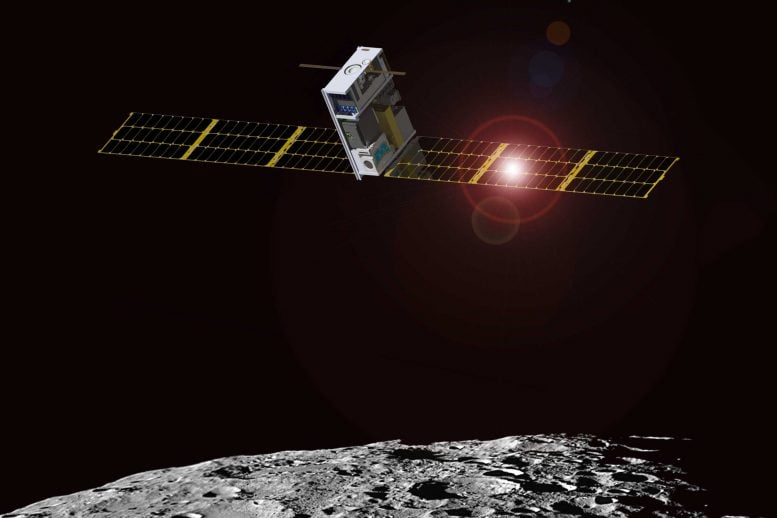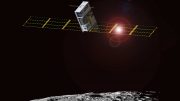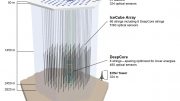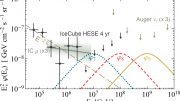Lunar IceCube, NASA’s water-scouting CubeSat, is now poised to hitch a ride to lunar orbit. Although it is not much bigger than a shoe box, Lunar IceCube’s data will have an outsized impact on lunar science.
The satellite is integrated into the Space Launch System (SLS) rocket and ready to journey to the Moon as part of the uncrewed Artemis I mission, launching this year.
Lunar IceCube will orbit the Moon and use a spectrometer to investigate lunar ice. Earlier missions already revealed water ice on the Moon, but Lunar IceCube will further NASA’s knowledge about lunar ice dynamics.
Scientists are especially interested in the absorption and release of water from the regolith — the Moon’s rocky and dusty surface. With Lunar IceCube investigating this process, NASA can map these changes as they occur on the Moon.
NASA’s Lunar IceCube mission will journey to the Moon as a secondary payload on the Artemis I mission. Credit: NASA’s Goddard Space Flight Center
Lunar IceCube will also examine the exosphere — the very thin atmosphere-like volume surrounding the Moon. By understanding the dynamics of water and other substances on the Moon, researchers will be able to predict seasonal changes in lunar ice that could impact its use as a resource in the future.
All of this will be achieved from an efficient and cost-effective CubeSat that only weighs 31 pounds (14 kg). Lunar IceCube is just one of several CubeSats catching a ride to the Moon aboard Artemis I. These small satellites, along with future Artemis missions, will increase our knowledge of living and working on the Moon and will eventually help prepare for human explorers on Mars.
Lunar IceCube is funded by NASA’s Next Space Technologies for Exploration Partnerships program, or NextSTEP, in support of NASA’s Advanced Exploration Systems Division within the Exploration Systems Development Mission Directorate. The Lunar IceCube mission is led by Morehead State University in Morehead, Kentucky; NASA’s Goddard Space Flight Center in Greenbelt, Maryland; NASA’s Jet Propulsion Laboratory in Southern California; NASA’s Katherine Johnson Independent Verification and Validation Facility in Fairmont, West Virginia; and Busek Space Propulsion and Systems in Natick, Massachusetts.










Be the first to comment on "NASA’s Lunar IceCube – Moon-Observing CubeSat Ready for Artemis Launch"